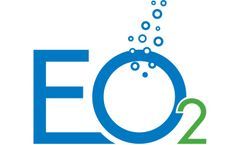Patient Simulator Articles & Analysis
10 articles found
The various applications of animal models in drug development and highlights their significance in advancing medical discoveries: Understanding Disease Pathways: Animal models enable researchers to mimic the complex biological processes underlying various diseases, allowing for a deeper understanding of the mechanisms involved. By simulating the disease in question, scientists ...
In the 1980’s, to become an officer in military nurse corps, you had to be a US citizen with a Bachelor of Science in nursing and pass the nursing licensure exam (NCLEX-RN exam). Military nurses care for patients as they would any other patient in the civilian community. As a young nurse, you hone your clinical skills and, as you go up in rank, your ...
Objectives:To quantitatively compare viral dispersion from invasive and noninvasive respiratory support modalities. Methods:This study used a simulated ICU room with a breathing-patient simulator exhaling nebulized bacteriophages from the lower respiratory tract with various respiratory support modalities: invasive ventilation (through an ...
Digitisation software was used to simulate individual patient level data from Kaplan—Meier survival plots. ...
Abstract Background: Noninvasive ventilation (NIV) via helmet or total facemask is an option for managing patients with respiratory infections in respiratory failure. However, the risk of nosocomial infection is unknown. Methods: We examined exhaled air dispersion during NIV using a human patient simulator reclined at 45° in a ...
The LowEx system was tested in a model room for burn patient and compared with the conventional one. Thermal comfort conditions were simulated for three individual users (burn patient, healthcare worker and visitor) energy use was measured. In a simulation, users were exposed to the required conditions for burn ...
Allocation of pre-hospital EMS (Emergency Medical Service) resources and effectiveness of emergency medical training are critical to patients. The demands for EMS are expected to increase in the future. By analysing the relationship between emergency response and the survival rates, the effectiveness of EMS resources and competence of personnel were evaluated. In other words, the ...
Abstract Background: As part of our influenza pandemic preparedness, we studied the exhaled air dispersion distances and directions through two different face masks (Respironics; Murrysville, PA) attached to a human-patient simulator (HPS) during noninvasive positive-pressure ventilation (NPPV) in an isolation room with pressure of -5 Pa. ...
The general purpose Monte Carlo N-Particle Radiation Transport Computer Code (MCNP4C) was used to calculate the equivalent dose to the person or people accompanying patients who have been exposed to radiation that was scattered from the patient. To do the calculations, two homogeneous water phantoms were used to simulate the ...
Synthetic Distributed Readiness Training Environment (SDRTE) combines Advanced Distributed Interactive Simulation (A-DIS) and Medical Application Service Provider (Med-ASP) concepts into a seamlessly integrated training platform for the development and maintenance of First Responder (1RP) operational medical readiness. A synthetic substitute for the traditional, restrictive ...





